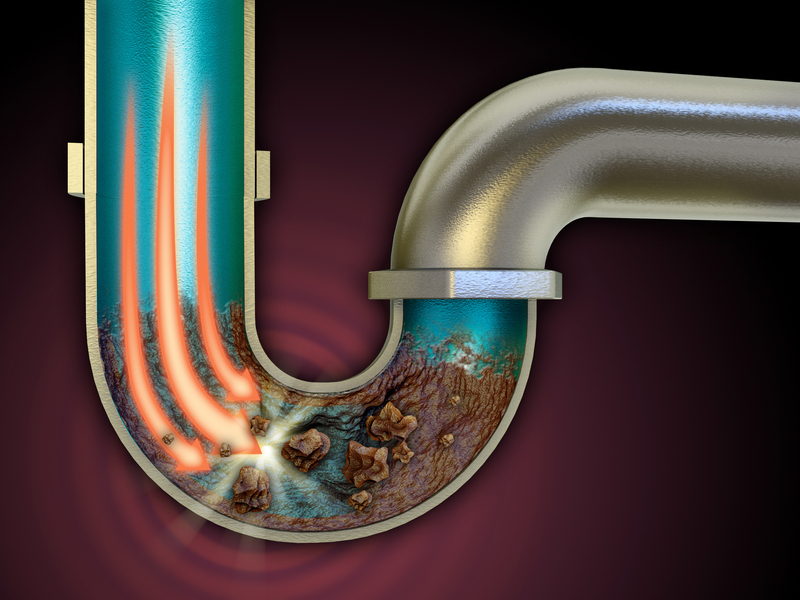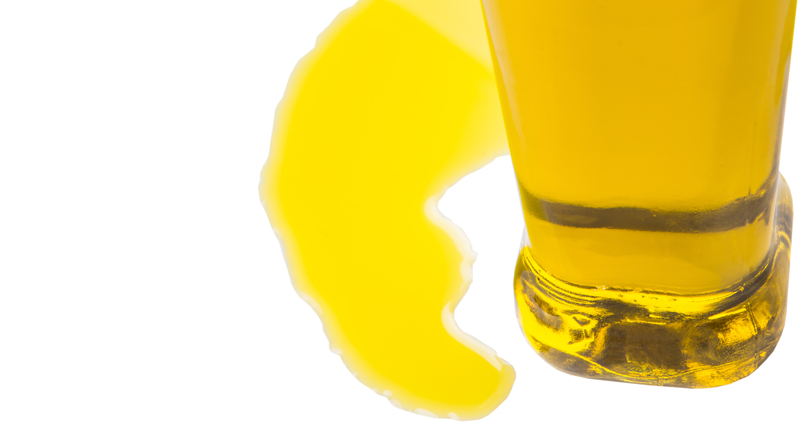Simple Solutions for Keeping Bathroom Mold-Free
Posted on 13/06/2025
Simple Solutions for Keeping Bathroom Mold-Free
Mold in the bathroom is a common headache for homeowners and renters alike. Its presence is unsightly, damaging to your property, and potentially hazardous to your health. Fortunately, you don't need a complicated or expensive remodel to solve this problem. With the right strategies and regular maintenance, you can keep your bathroom mold-free and safeguard your home environment. This comprehensive guide covers practical, easy-to-apply solutions to help you protect your bathroom from mold.

Why Keeping Your Bathroom Mold-Free Matters
Mold thrives in warm, moist areas--which makes bathrooms a prime target. Exposure can lead to respiratory problems, skin irritation, and allergic reactions, especially in sensitive individuals. Additionally, mold can cause structural damage and lower property value. By practicing preventative measures against bathroom mold, you not only protect your family's health, but also preserve the integrity and appearance of your home.
What Causes Mold in Bathrooms?
Understanding the causes is the first step in achieving a mold-free bathroom. Several factors contribute to mold growth, including:
- High humidity from showers and baths
- Poor ventilation and airflow
- Persistent water leaks or pooling
- Soap scum and organic residues
- Infrequent cleaning
By tackling these root causes, you'll be well on your way to enjoying a bathroom without mold.
Simple Solutions for Preventing Bathroom Mold
1. Improve Ventilation
- Install or use an exhaust fan: Make a habit of switching on your bathroom fan while showering and leaving it on for at least 20-30 minutes afterward. This significantly reduces humidity levels and helps to keep mold at bay.
- Open windows and doors: If safe and possible, open a window or keep the bathroom door ajar to increase airflow and hasten moisture evaporation.
- Dehumidifiers: In particularly damp climates, a small bathroom dehumidifier can work wonders for a mold-free bathroom.
2. Wipe Down Surfaces Regularly
- Dry shower walls and doors: After bathing, use a squeegee or towel to wipe down tiles, glass, and other surfaces. This simple step drastically reduces the opportunity for mold to gain a foothold.
- Clean water-prone areas: Pay close attention to faucets, grout lines, and the space around the toilet tank.
3. Fix Leaks Promptly
- Check plumbing fixtures: Inspect sinks, showerheads, and toilets for leaks or drips. Even a slow drip creates a wet environment where mold can flourish.
- Seal cracks and gaps: Use waterproof caulk around sinks, tubs, and windows to prevent water from seeping into walls and behind fixtures.
4. Clean and Disinfect Weekly
- Use mold-inhibiting cleaners: Look for cleaners that specifically prevent mildew and mold, or make your own solution with vinegar (an effective, natural mold deterrent).
- Don't forget overlooked areas: Behind the toilet, under the sink, and inside cabinets can harbor hidden mold.
5. Choose Mold-Resistant Materials
- Paint: Select paints formulated with mildew-resistant additives to discourage surface growth.
- Shower curtains and liners: Opt for washable, mold-resistant fabrics and clean them regularly.
- Flooring: Tile, sealed stone, or waterproof vinyl are the best options for a truly mold-resistant bathroom floor.
- Bath mats: Ensure mats are quick-drying and wash them frequently.
6. Remove Standing Water Immediately
- Squeegee shower after use: One of the simplest habits for a mold-free bathroom, squeegeeing prevents water from lingering on surfaces.
- Check sink areas: Wipe down around sinks and counters to handle stray splashes or leaks.
7. Keep Clutter to a Minimum
- Store toiletries in bins or caddies: Bottles, sponges, and washcloths can trap moisture and provide surfaces for mold. Organize these items to allow for air circulation.
- Hang towels and bath items to dry: Avoid tossing towels in piles, which keeps them damp and encourages mildew. Use towel bars and hooks to ensure proper drying.
Mold Prevention Checklist for a Bathroom Free from Mold
- Run exhaust fans every time you shower or bathe and for 30 minutes afterward.
- Open windows for at least 10 minutes daily, weather and safety permitting.
- Fix any water leaks as soon as you notice them.
- Wipe down all surfaces and squeegee shower walls after each use.
- Wash bath mats, towels, and shower curtains weekly.
- Clean the bathroom thoroughly, including less-visible spots, at least once per week.
- Declutter countertops and inside cabinets to allow air to circulate freely.
Common Mistakes That Encourage Bathroom Mold
Even the most diligent homeowners can accidentally create mold-friendly conditions. Are you making these mistakes?
- Ignoring small leaks: A persistent drip may seem minor but quickly becomes a breeding ground for mold and mildew.
- Poor grout or aging caulk: Cracked or missing grout around tubs and sinks allows water to seep behind the walls, leading to hidden mold colonies.
- Not using the exhaust fan: Simply having a fan isn't enough; it needs to be used consistently and kept clean for maximum effect.
- Storing wet towels in a hamper: Always allow towels and mats to dry completely before tossing them in the wash bin.
- Skipping regular cleaning: Weekly cleaning is a must, as soap scum and residue are food sources for mold.
How to Safely Remove Existing Bathroom Mold
If you discover mold in your bathroom, don't panic! Here's a step-by-step process:
- Wear gloves, a mask, and goggles. Protect yourself from inhaling spores, especially if you have respiratory sensitivities.
- Ventilate the area. Open windows and doors or run an exhaust fan during cleaning.
- Use a cleaning solution. An easy and eco-friendly mix is one part white vinegar to two parts water. For stubborn patches, add a small amount of baking soda.
- Scrub with a stiff brush, paying special attention to grout and corners.
- Rinse and dry thoroughly. Wipe surfaces dry with a towel after cleaning to remove lingering moisture.
- If the mold persists, or covers more than 10 square feet, contact a professional remediation company.
Natural Remedies for a Mold-Free Bathroom
- Vinegar: Spray undiluted vinegar onto affected areas and let sit for an hour before wiping away.
- Baking Soda: Mix with water to create a gentle abrasive paste, ideal for grout and tiles.
- Tea Tree Oil: Combine one teaspoon of tea tree oil with one cup of water in a spray bottle, shake, and apply to moldy surfaces. This natural oil is a potent anti-fungal.
- Lemon Juice: Acidic and fragrant, lemon juice can help break down small patches of mildew while leaving your bathroom smelling fresh.
How to Keep a Bathroom Mold-Free in the Long Term
Consistency is key. Simple daily and weekly habits are the foundation for a mold-free bathroom environment. Consider these lasting strategies:
- Schedule regular deep cleans: Once monthly, scrub grout, drain covers, and hard-to-reach spots.
- Monitor humidity: Keep your bathroom humidity below 50%, using a hygrometer to track levels.
- Upgrade ventilation if necessary: If moisture problems persist, consider installing a more powerful exhaust fan or adding a window.
- Replace aging materials: Swap out any water-damaged drywall, old insulation, or permanently stained grout.
The Importance of a Mold-Free Bathroom for Health and Home
A commitment to keeping your bathroom mold-free pays off in healthier air quality, reduced repair costs, and increased comfort and safety for everyone. Bathroom mold prevention doesn't need to be complicated. By applying these simple, consistent solutions, you can enjoy a home that is clean, inviting, and resilient for years to come.

Frequently Asked Questions about a Mold-Free Bathroom
-
How often should I clean my bathroom to prevent mold?
At least once per week, with daily quick wipes of wet surfaces. -
Can keeping plants in my bathroom help reduce mold?
Certain houseplants can absorb moisture, but be sure to choose non-toxic varieties and avoid overwatering them. -
Is bleach the best solution for mold removal?
Bleach is effective for non-porous surfaces but doesn't penetrate grout well. Natural alternatives like vinegar are safer for regular use. -
What should I do about mold in bathroom ceilings and walls?
If the problem is extensive or recurring, contact a professional to assess for leaks or ventilation failures.
Conclusion: Maintain a Mold-Free Bathroom with Ease
The fight against bathroom mold doesn't require drastic measures. With these practical and straightforward steps, anyone can achieve a clean, mold-free bathroom that is both beautiful and safe. Consistency is your best weapon: daily drying, weekly deep cleaning, and prompt attention to moisture and leaks. Review the checklist above, adopt a prevention mindset, and enjoy the fresh, healthy atmosphere that only a mold-free bathroom can provide.




